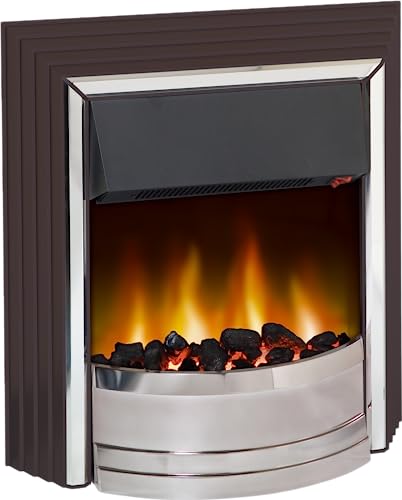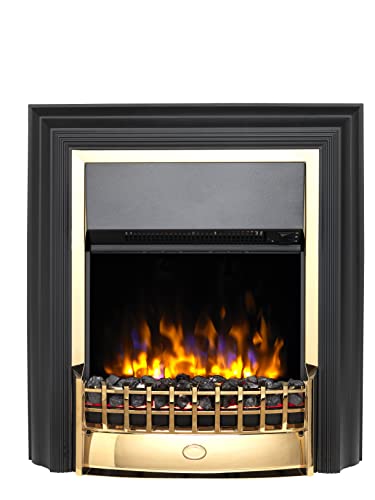
Fireplaces And Stove
FollowOverview
-
Sectors Construction / Facilities
-
Posted Jobs 0
Company Description
10 Things You’ve Learned About Preschool That’ll Help You Understand Wood Burner Fireplace
How to Get the Most From a Wood Burner Fireplace
In contrast to traditional open fireplaces, wood stoves are designed and optimised to burn wood. This enables them to comply with stricter emission standards.
Wood burning stoves are renowned for their dancing yellow flames, cosy crackling sounds, and that primordial sense of warmth. The smoke produced is filled with harmful air pollutants such as benzene, formaldehyde, and polycyclic aromatic hydrocarbons.
Efficient
Fireplaces and stoves that burn wood provide beautiful and natural heat to the home, but they are also extremely efficient. A good quality wood burner can achieve an Ecodesign rating of up to 77 percent. With the rising cost of energy, it is essential to make sure you get the most value from your log stove The good news is that it’s much simpler than ever!
A key factor in how effective a wood burning stove is will be the water content of the wood. This is the reason we suggest only using seasoned wood which has been dried for at least one year, and more often two years. The drier the wood, the more efficiently it burns which means less smoke and harmful emissions.
Another great benefit of a wood-burning stove is that it’s a low carbon source of fuel, which is great for the environment. In addition, by buying locally sourced firewood you are helping to promote the active management of forests, which is a great aspect for wildlife.
As far as maintenance is concerned, the only requirement for a wood stove is to regularly scoop up and dispose of the ash. It’s quite a challenge but it’s worth it to get the maximum heat from every log. If you allow the ashes 2-3 days to completely cool and then, they can be used as a non-toxic, environmentally friendly melt of ice. They can be used to polish jewelry or absorb smells.
A wood-burning fireplace is an old-fashioned classic. Although they’re not as popular than gas fires but there’s no denying the beauty and enthralling sound of a roaring log fire. These fires are great to cuddle to on cold winter nights, and create a warm and welcoming area in your home. Investing in a high-quality wood stove will pay off for many years. Our chimney sweeps are on hand to assist you in getting the most out of your stove – give us a call now to find out more.
Low Carbon
Wood burners that burn clean and efficiently are one of the best ways to save the cost of logs while keeping your home warm. They also help local woodland management. This is a great way to support wildlife in your local area.
Wood-burning Fireplaces And Stove and stoves create minimal pollution when they are maintained properly and used with dry, seasoned firewood. However, when they are not maintained well or made of poor quality wood, the smoke produced by them is contaminated with fine particles (known as particulate pollution) that can cause irritation to the lungs and other organs. It also contains carbon monoxide and toxic air pollutants such as formaldehyde, benzene, and polycyclic aromatic hydrocarbons. Inhaling this type of air pollution may cause irritation to the lung, coughing, wheezing and asthma attacks and may even cause serious health issues like cancer, heart disease or premature death.
Some people worry that using a wood-burning stove can cause climate change, but this is not necessarily true. Wood burning produces energy that is carbon-neutral. The wood absorbs carbon dioxide throughout its lifetime. When it is burned, the carbon is released into the air.
The wood is sourced locally, which reduces the amount pollution that is produced during the transport process. It is also essential to select top quality, seasoned hardwoods as these will have an extended and even burn than softwoods.
Modern, EPA certified wood stoves and heaters (such as those made by Charlton & Jenrick) have considerably lower emissions than earlier stoves. They are certified to meet 2020 EPA standards, which are considerably more stringent than the previous emission limits.
To prevent a build-up of exhaust in your home, all wood-burning stoves must be vented completely to the outside. All our current DEFRA-exempt and clean-burn stoves produce extremely clear exhaust by keeping the flames above the wood logs and using dry, seasoned firewood.
A wood burning stove equipped with an acatalytic converter or hybrid unit could provide the most efficient low-carbon solution for heating. These units ignite the gases and particulates that were ignited during the initial combustion at a later stage by mixing them with superheated air. The remaining gases and particulates are then transferred to a catalytic unit for a final third combustion. This reduces emissions to levels well below the standards set by the government.
Clean Burn
Cleanburn wood stoves burn fuel at the highest efficiency. This results in minimal emissions of particles into the air when burning wood. The stove’s air management system controls the intake and venting of gases, ensuring the combustion process takes place in a sealed, controlled environment. It also regulates the height of the flame to minimise emissions and maximise the heat output.
This means that your chimney as well as the surrounding area will be a lot cleaner than older stoves. Particulate matter (also known as particle pollution) from incompletely combusted wood can cause respiratory problems like wheezing and coughing and can lead to the development of heart disease such as stroke, diabetes, and other serious health conditions. The smoke from wood burning is also an element that contributes to poor air quality in urban areas.
Smoke from poorly burned timber has fine particulate pollution and harmful air pollutants such as carbon monoxide as well as other harmful air pollutants such as nitrogen oxides as well as volatile organic compounds (VOCs), benzene and formaldehyde. These particles can be absorbed into the lungs, and other organs, causing discomfort, damage and even death. Airborne dust can also harm the surfaces in your home and give a gritty feel to rooms.
It is essential to use only high-quality, seasoned and dried firewood when using your wood burner fireplace. Hardwoods like oak, ash, and beech are the best choice for heating. Hardwoods have a higher density and BTU content. They also offer more heat than softwoods.
Check with your local authority to determine whether they have rules about wood burning. These rules may include rules on odors and nuisances, as well as visible emissions or smoke opacity limits.
If you have a wood stove with glass doors, it’s important to keep the glass free of deposits and grime. You can use a dry cloth or oven cleaner spray to accomplish this. Alternatively, you can add bicarbonate of soda mixed with a bit of water to the glass.
Regular maintenance of your stove and chimney is also crucial. Regular chimney cleanings are necessary to eliminate creosote, and also to ensure that the flue is working correctly. It is also recommended to note the dates for periodic inspections on your calendar. This will help you avoid costly repairs and extend your wood burner’s life.
Low Maintenance
Wood burning fireplaces are popular because they provide a natural warmth. This kind of fireplace needs some maintenance and upkeep. If not cleaned and maintained regularly, the chimney, flue and stove could all be potential sources of fires within your home. Fireplaces can also be a great source of heat when the power goes out, especially in winter, when snow storms could cause branches to fall from trees and rip down power lines.
If you use a wood stove to heat your home, you’ll be able to reduce your carbon footprint compared to other fossil sources of fuel like gas. Modern wood stoves, inserts and fireplaces are constructed to conform to EPA standards (Environmental Protection Agency) which means they produce very little emissions. The more well-seasoned wood is, the more efficient it will be as well and you’ll use less of it to get the same amount of heat.
These fireplaces require some maintenance and attention, including making sure they are not in close proximity to the ignition source and that a screen is installed. The air flow can be improved by keeping the grate clean of ash and debris. This will help keep the fire burning longer and your home clean. It is recommended that your stove and chimney swept at least twice a year to avoid creosote accumulation which could cause fire hazards or blockage and hinder ventilation.
A wood burning stove needs to be kept in good order and it can take a while for a novice homeowner to understand how to light, ignite, and maintain a steady fire in the fireplace. But, once you’ve mastered the art of building and maintaining the fire in your wood stove, it can be a source of enduring pleasure that can provide warmth and warmth to your home year after year.
 Wood burning fireplaces have been around in a variety of forms or styles for over 500 years. They’ve gained a lot of attention due to their effectiveness, sustainability, and the natural warmth of wood. Talk to your local Regency dealer about the advantages of wood stoves or inserts for your home if you’re planning to purchase a new heater.
Wood burning fireplaces have been around in a variety of forms or styles for over 500 years. They’ve gained a lot of attention due to their effectiveness, sustainability, and the natural warmth of wood. Talk to your local Regency dealer about the advantages of wood stoves or inserts for your home if you’re planning to purchase a new heater.
